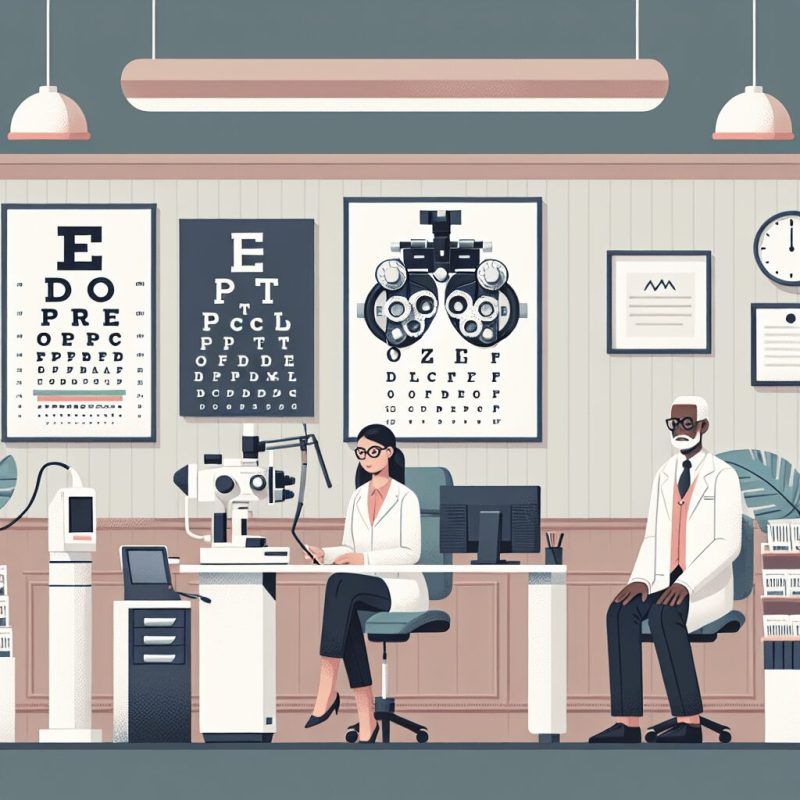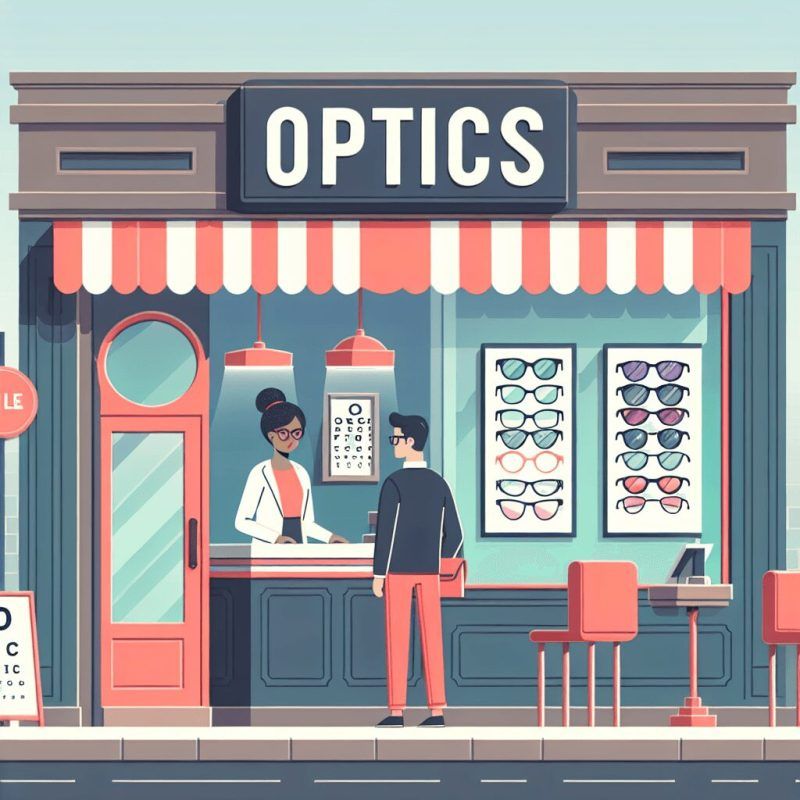Doctor's Corner
The Procedure Behind Glaucoma Treatment
Glaucoma is a common eye condition that can cause vision loss if not treated. When medications are not enough to control eye pressure, surgery may be necessary. Laser procedures, such as trabeculoplasty, can help with fluid drainage by opening clogged tubes. Incisional surgeries like trabeculectomy create new openings in the eye to lower eye pressure. Depending on the severity and type of glaucoma, different surgical options such as implants or minimally invasive surgeries may be recommended to preserve eyesight. After surgery, patients may experience temporary discomfort, blurred vision, and redness during the recovery process.
Diagnosis of Glaucoma
Initial Examination by Eye Doctor
An eye doctor’s examination for glaucoma starts with reviewing the patient’s medical history and doing a thorough eye exam.
The exam includes tests to measure eye pressure, check for optic nerve damage and vision loss, measure corneal thickness, and inspect the drainage angle.
If glaucoma has caused irreversible damage, treatment focuses on slowing or preventing further vision loss.
Treatment options may include prescription eye drops, oral medicines, laser treatment, surgery, or a combination.
Eye drops, usually the first treatment, help reduce eye pressure through different methods.
For severe cases, laser surgeries like trabeculoplasty and laser peripheral iridotomy can clear eye drainage blockages or create holes for fluid drainage.
Incisional surgeries such as trabeculectomy or drainage implant surgery may be necessary.
After surgery, regular follow-up with the eye doctor is crucial for monitoring and adjusting treatment.
Further Testing for Confirmation
Glaucoma testing may involve laser treatments or surgeries. Laser procedures like argon laser trabeculoplasty and selective laser trabeculoplasty can help reduce eye pressure by opening clogged tubes. Incisional surgeries like trabeculectomy or drainage implant surgery create openings to improve fluid drainage and decrease eye pressure. These tests address the root cause of glaucoma – impaired fluid drainage causing pressure that harms the optic nerve and vision.
Surgical procedures aim to manage glaucoma effectively, prevent vision loss, and complement prescription eye drops. Follow-up appointments post-surgery are crucial for monitoring progress and treatment effectiveness.
Treatment Options for Glaucoma
Medication (Eyedrops)
Eyedrops are commonly used to treat glaucoma. They help reduce eye pressure. Depending on how severe it is, they can be applied 1 to 4 times a day. Possible side effects include eye irritation, redness, stinging, and blurred vision.
It’s important to be careful about any other conditions or medications that might interact with these eyedrops. They get absorbed into the bloodstream. When using eyedrops, wash your hands first. Then, pull down the lower eyelid and let a drop fall into the eye. Close your eye and press lightly at the corner to prevent spills.
If eyedrops don’t work, other surgeries like laser trabeculoplasty, trabeculectomy, or drainage implants might be suggested. These surgeries help manage glaucoma and prevent more vision loss. After surgery, patients may have redness, soreness, and temporary blurred vision. Recovery usually takes a few weeks. Regular check-ups are needed to monitor eye pressure and recovery progress.
Laser Surgery (Glaucoma Treatment Procedure)
Laser surgery is used to treat glaucoma. It aims to lower eye pressure by improving fluid drainage. Different types of laser surgery can be used, including:
-
Argon laser trabeculoplasty
-
Selective laser trabeculoplasty
-
Laser peripheral iridotomy
-
Cyclophotocoagulation
These procedures can help reduce eye pressure and prevent further damage to the optic nerve. Laser surgery is beneficial due to its less invasive nature, quicker recovery time, and potential to decrease the need for medication.
Laser Trabeculoplasty
Laser Trabeculoplasty is a type of laser surgery used in the treatment of glaucoma. It helps reduce eye pressure by targeting the drainage system of the eye.
This procedure opens clogged tubes, allowing fluid to drain efficiently and alleviate pressure inside the eye.
Compared to other surgical options for glaucoma, Laser Trabeculoplasty is less invasive. It can be performed in an office setting and is often chosen as a first-line treatment due to its effectiveness in controlling eye pressure.
However, there are limitations to consider, like the need for repeat treatments in some cases. Laser Trabeculoplasty may not be suitable for all types of glaucoma, such as closed-angle glaucoma.
While the procedure can significantly improve eye pressure and potentially prevent vision loss, it is important to follow up with regular appointments and adhere to prescribed medication for long-term success in managing glaucoma.
Laser Peripheral Iridotomy
Laser Peripheral Iridotomy is a procedure used to create a small hole in the iris. This helps fluid flow better in the eye, especially in closed-angle glaucoma cases. The aim is to reduce eye pressure, improving fluid drainage and lowering the risk of vision loss linked to glaucoma.
Benefits of Laser Peripheral Iridotomy include preventing glaucoma attacks, opening the eye’s drainage angle, and effectively reducing eye pressure. However, there are risks like irregular heart rate, high blood pressure, fatigue, and the possibility of needing repeat procedures.
Compared to other treatments such as medications or incisional surgeries, Laser Peripheral Iridotomy is less invasive. It can be performed as an outpatient procedure with a quicker recovery time. It’s often recommended before more invasive procedures like trabeculectomy or drainage implants.
After the procedure, follow-up appointments are crucial to monitor eye pressure and ensure treatment effectiveness.
Cyclophotocoagulation
Cyclophotocoagulation is a surgical procedure used to freeze parts of the eye that produce eye fluid in individuals with severe damage from glaucoma. It may be recommended when other surgeries have not been successful.
This procedure can also be done with a laser instead of freezing. The potential benefits of Cyclophotocoagulation include reducing eye pressure and preventing further vision loss, especially in cases where other treatments have not been effective.
However, like any surgical procedure, there are risks associated with Cyclophotocoagulation. Some of these risks include irregular heart rate, high blood pressure, fatigue, red, itchy, or swollen eyes, and eye discomfort.
It is important to discuss the benefits and risks with your healthcare provider when considering Cyclophotocoagulation as a treatment option for glaucoma.
Incisional Surgery
Incisional surgery is a type of surgery used to treat glaucoma. It involves creating a small hole in the eye’s wall to let fluid drain out, lowering eye pressure.
Unlike laser surgeries done in the office, incisional surgery is usually done in the operating room. Patients might feel mild discomfort afterward and should follow post-operative care instructions from their healthcare provider.
One benefit is that incisional surgery can effectively reduce eye pressure, helping to save remaining vision when other treatments aren’t successful. However, there are risks like sensitivity to light, infection, irritation, bleeding, vision loss, and possible need for more surgeries.
Recovery time varies, and patients might need follow-up appointments to track eye pressure and recovery progress. Overall, incisional surgery can be a helpful option for glaucoma patients who haven’t responded to other treatments.
It’s essential to talk to a healthcare provider about the benefits and risks to decide if incisional surgery is right for managing glaucoma and preserving vision.
Procedure Details for Glaucoma Surgery
Consultation with Healthcare Provider
During a consultation with a healthcare provider about glaucoma surgery, patients should discuss different surgery types available. These include laser surgery, incisional surgery, and minimally invasive glaucoma surgeries (MIGS).
It’s important for patients to consult with their healthcare provider before choosing any glaucoma treatment. This ensures the best outcome for their eye health.
Consulting with a healthcare provider helps patients understand the benefits of each treatment option. This includes lowering eye pressure, preserving vision, and reducing the risk of optic nerve damage.
Patients can ask about potential side effects of treatments like laser trabeculoplasty, trabeculectomy, and drainage implant surgery. This helps them make informed decisions about their care.
Discussing post-operative care, follow-up appointments, and lifestyle changes with a healthcare provider can assist patients in navigating their glaucoma treatment successfully.
What to Expect During Glaucoma Surgery
Glaucoma surgery can have different durations based on the specific procedure. Laser surgeries are quick, lasting only minutes. On the other hand, traditional surgeries like trabeculectomy may take up to about an hour.
There are possible risks and complications linked to glaucoma surgery. These include sensitivity to light, infection, long-term eye irritation and inflammation, bleeding, vision loss, the possibility of needing more surgeries, and anesthesia sensitivity.
Patients undergoing glaucoma surgery usually do not feel pain. This is because numbing medications and anesthesia are used to guarantee comfort during the procedure.
Glaucoma Surgery FAQs
How Long Does the Surgery Last?
Glaucoma surgeries can vary in duration depending on the type of procedure. For example:
-
Laser surgeries like argon laser trabeculoplasty and selective laser trabeculoplasty typically only take minutes.
-
Traditional incisional surgeries, such as trabeculectomy or tube shunt surgery, may last around one hour.
The time taken can be influenced by factors like the surgery’s complexity and the patient’s condition.
Before the surgery, patients will get local anesthesia, numbing eye drops, and possibly numbing injections to reduce discomfort.
Patients should follow their healthcare provider’s pre-operative instructions and arrange transportation home afterward, especially if sedatives or general anesthesia are used.
Following the surgery, patients will have follow-up appointments to check eye pressure and recovery.
What Are the Risks Involved?
Undergoing glaucoma surgery has risks and complications. It’s vital to carefully consider them. The surgery, whether laser or incisional, can cause side effects like eye pain, redness, and sometimes more vision loss.
After surgery, some people may have fluctuations in eye pressure, which can impact its success. Complications like infection, inflammation, eye bleeding, or cataract development may occur.
The surgery aims to preserve the remaining vision but cannot reverse optic nerve damage. Close monitoring, post-op care, and regular follow-up visits are important to manage the condition and prevent more vision loss.
Before deciding on surgery, consult a healthcare provider to understand the risks involved.
Does the Surgery Hurt?
Glaucoma surgery is usually not very painful because local anesthesia or numbing eye drops are used during the procedure. The patient’s comfort is a top priority during the surgery.
After the surgery, there may be some temporary soreness or irritation. Post-operative pain can differ from person to person, but it’s usually controlled with pain medication if needed.
The main objective of glaucoma surgery is to reduce eye pressure and protect any remaining vision, especially when other treatments have not worked. Regular follow-up appointments are crucial to track progress and make sure the surgery is effectively managing glaucoma.
FAQ
What are the different types of procedures used in glaucoma treatment?
The different types of procedures used in glaucoma treatment include medications, laser therapy (e.g., selective laser trabeculoplasty), and surgery (e.g., trabeculectomy, tube shunt placement).
How is glaucoma diagnosed before determining the appropriate treatment?
Glaucoma is diagnosed through a comprehensive eye exam, which may include tonometry, visual field testing, and optic nerve imaging. These tests help to determine the type and severity of the condition before deciding on the most suitable treatment plan.
What are the risks and potential side effects associated with glaucoma treatment procedures?
Potential risks and side effects of glaucoma treatment procedures include eye infection, inflammation, impaired vision, and increased intraocular pressure. Examples include post-operative pain, blurred vision, and possible allergic reactions to medications.
How long does the recovery process typically take after undergoing glaucoma treatment?
The recovery process after undergoing glaucoma treatment typically varies depending on the type of treatment. For example, recovery from laser trabeculoplasty may take a few days, while recovery from incisional surgery may take several weeks.
Are there any alternative options to traditional surgical procedures for glaucoma treatment?
Yes, alternative options for glaucoma treatment include laser therapy (such as selective laser trabeculoplasty or laser peripheral iridotomy) and medication (such as eye drops or oral pills like carbonic anhydrase inhibitors).
Don’t miss the opportunity to receive top-notch treatment for your eyes. Book your eye exam today at Superior Eye Care in The Woodlands or Quality Eye Care in Willowbrook, Texas, and let us help you manage your glaucoma.
The post The Procedure Behind Glaucoma Treatment first appeared on Optometrist in Woodlands & Willowbrook TX.
Doctor's Corner





